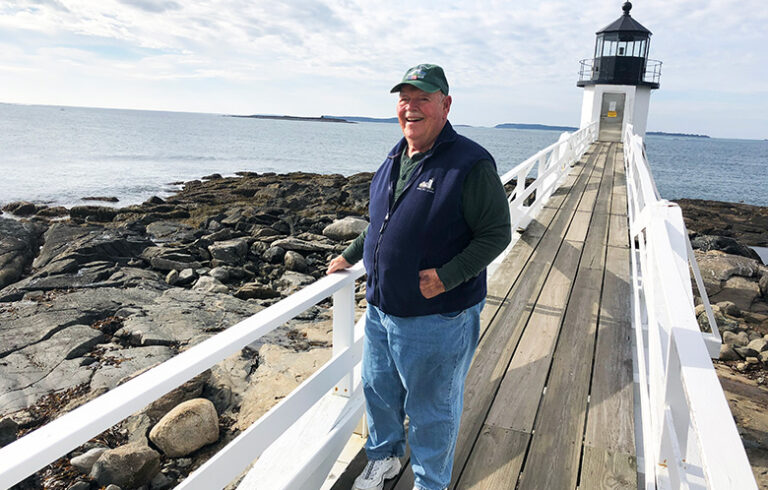For the last year or so, Stonington’s Island Ad-Vantages newspaper has been covering the demise of a nursing home on Deer Isle and the efforts to save the institution. It’s not a trivial matter—having a place for residents to be cared for and live their final days near their homes and families is an important component of a healthy community.
More recently, I read a short note in Eastport’s The Quoddy Tides newspaper remarking on a decision that meant the closing of the only bank on Grand Manan, the Canadian island that lies off Lubec.
Clearly, there are no easy ways to force businesses to continue operating in a community where they may not be earning a profit or able to hire staff. But neither should these developments be shrugged off without reflecting on their consequences.
I can think of a few coastal communities that have lost any claim to that authenticity.
Early in my time at the Island Institute, when the organization’s work was almost exclusively devoted to supporting Maine’s 15 unbridged, year-round island communities, I learned about the three-legged stool concept.
The idea, if I remember it correctly, is that an island community needs at least three basic institutions to remain vital—a school, a store, and a post office. Lose one or more, and the island begins to resemble a seasonal enclave.
Schools hold a chicken and egg place on islands. If there is a school, families with children will remain, and if there is a school, families will consider relocating there. Schools also provide jobs and, in most cases, the physical plant allows for community gatherings.
A store, even a rudimentary one that sells only food staples, makes it possible to remain on-island between trips to the mainland supermarket. Bad weather stops the ferry from running? At least you can grab some bread, eggs, and milk from the island store.
If the store expands its stock during the summer, visitors can extend their stays.
The post office may seem like an odd community pillar, but for islands, it’s essential. A post office allows small business owners—artists, craftspeople, tradespeople, boat builders, and mechanics—to receive parts and materials and to ship product.
Ferry services, like the private ones that serve Isle au Haut and the Cranberry Isles, land contracts to carry the mail and that revenue makes the passenger service possible.
Considering what makes a community authentic—social and economic diversity and stratification being reasonable measures—has been a concern we’ve returned to in these pages, and I suspect we’ll continue to report and reflect on that idea.
I can think of a few coastal communities that have lost any claim to that authenticity. A couple of them, perhaps not coincidentally, are favorite places to visit for a walk. But I can’t imagine those towns holding any appeal for a young family to put down roots. And housing is rarely affordable in those towns.
As I’ve noted, it’s not easy to guide a market economy toward sustaining community social and economic pillars. Isle au Haut has taken the unprecedented step of raising money at its annual town meeting to support the island store, and if it’s operated independent of the municipality, I suppose that model could be replicated.
Banks are required by federal regulators to make loans available in economically disadvantaged neighborhoods. Could these institutions be nudged toward operating in rural areas by state incentives?
Yet I’m also reminded of learning about the dozen or so grocery stores that once operated in Belfast. In fact, when we arrived here in 1986, there was still a small food market on Lower Main Street. The business model for it remaining active wasn’t compelling. Who would want to shop among dusty canned food while worrying that meat, fish, and produce may have been kept on hand a few days longer than at a Hannaford or Shaw’s?
In the last 20 years, we’ve seen service center economies take hold in certain coastal communities, usually marked by the presence of big-box retailers. The final stages of this evolution, I fear, will be the suburbanization of those communities that lie within the orbit of service centers. Recognizing where this trend can be resisted, and where it is inevitable, is worth our attention.
Tom Groening is editor of The Working Waterfront. He may be reached at tgroening@islandinstitute.org.





